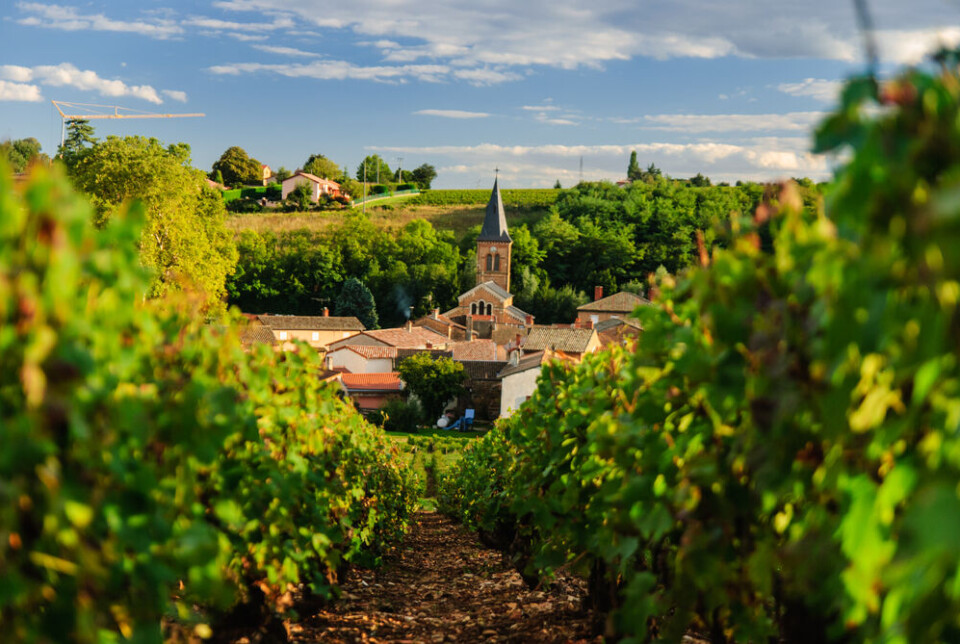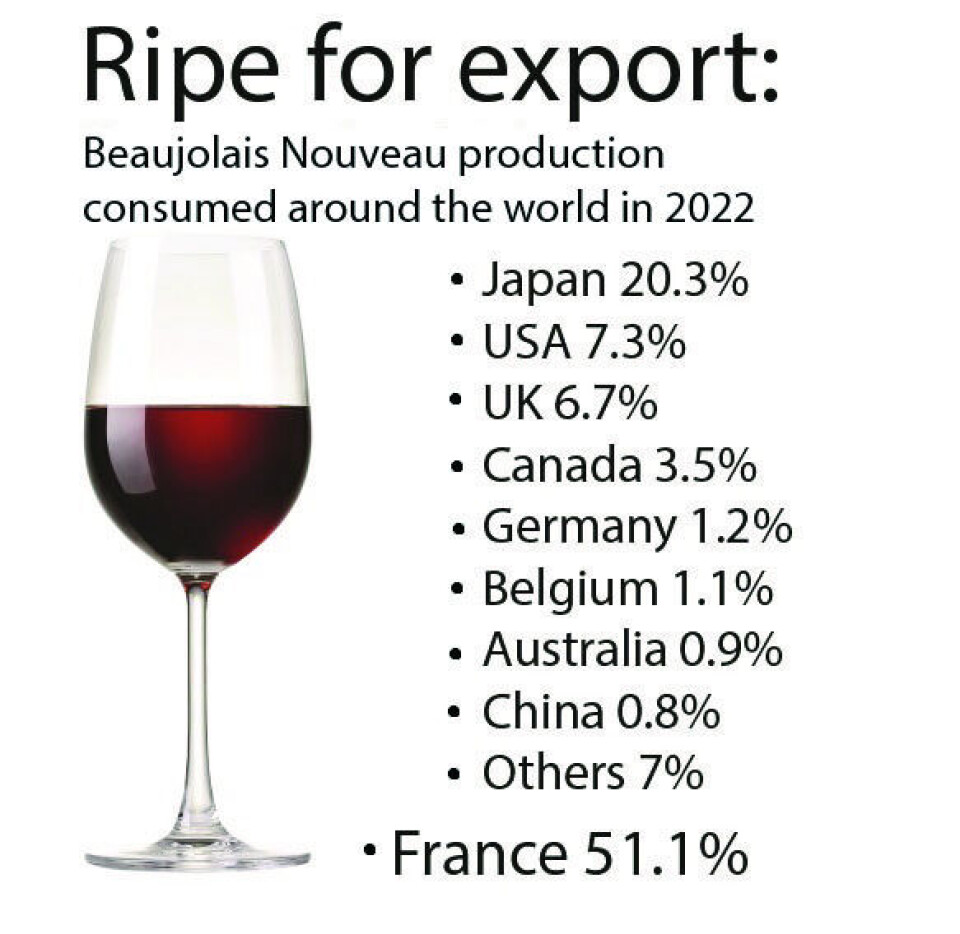-
White storks make strong return in France via nest ‘platforms’ and clipped wings
The Ligue pour la Protection des Oiseaux shares the conservation challenges in saving these birds from extinction
-
Hosting scheme in south-west France lets newcomers sample lifestyle
Households in nine Dordogne communes volunteer under Mes Nouveaux Voisins scheme
-
French boulangeries demand right for staff to work on May 1 so they can open
Artisan bakery owners can work but employees cannot, while certain industrial bakeries are allowed to remain open with workers
Beaujolais Nouveau: the French party wine the world has grown to love
The wine was consumed in over 100 countries last year

Beaujolais Nouveau is available each year on the third Thursday of November to an increasingly global public that has come to appreciate this young, unpretentious party wine.
This year it was released on November 16 at midnight.
Unlike most red wines, it is drunk almost immediately after harvesting, and is known for its light, fruity flavour.
Its extremely short fermentation period means that it lacks much of the character of mature reds, however, this, along with the wine’s lower alcohol content (10%) can make it pleasing to less demanding palates.
This short, six week fermentation period also explains the wine’s name: Beaujolais Nouveau is released at least one month before standard Beaujolais, which is itself also a young wine.
While in France, Beaujolais Nouveau is somewhat maligned as cheap and sometimes tasting of bananas, in many countries its release is much celebrated.
Indeed, aircraft loaded up with cases of the wine whisk it away on the day of its release to allow the public around the world to celebrate the date known as Beaujolais day.
In 2022, 6.5million bottles were consumed in over 100 countries, representing nearly half of the total production.

People celebrating Beaujolais day in France should expect to pay €8 a bottle this year, and perhaps raise a glass to those paying 3900 Yen, or €24, for the same drink in Japan.
The first new wine of the year
Beaujolais Nouveau was first released in 1951 in response to a shortage of wine stocks following the Second World War.
Made from young Gamay grapes, in the Beaujolais region of France just north of Lyon, the release of the Beaujolais Nouveau marks the end of the harvest season.
NOUVEAUX DES NOUVEAUX 📱
— Les Beaujolais Nouveaux (@BeaujolaisNvx) November 15, 2023
🙋♀️ Sarah Perrusset – Les Nouveaux vous attendent !
Découvrez comment, en quelques semaines seulement, Sarah vinifie et expédie ses Beaujolais Nouveaux pour le 16 novembre !
🔞 L'abus d'alcool est dangereux pour la santé, à consommer avec modération. pic.twitter.com/IbxZxbDPnC
It was traditionally made using the carbonic maceration process and artificial yeast, which accelerates the fermentation process and produces amyl ester, the chemical responsible for the banana aroma.
However, over the last few years winemakers have been opting for more natural methods in order to rediscover the original flavours of the Gamay grape.
By the 1970s, the release date had become a national event in France, with its date and time mandated by law.
The young wine became popular in Japan in the 1980s, where the public was quick to latch on to the cultural phenomenon of its release marked by a party.
Too much, too young
The wine has had a chequered history in the past few decades.
In the 2000s, it emerged that some producers had been adding sugar to their wines to speed up the fermentation process so their wines would be ready for Beaujolais day.
In 2001, to avoid a collapse in the wine’s price due to overproduction, the government ordered one million cases to be destroyed.
More recently, production has been struggling due to outbreaks of the Flavescence dorée parasite in vineyards, which has caused producers to decrease the production area from 22,000ha to 14,000ha.
‘Just pure delight’
However, the international market remains aloof from the wine’s domestic problems.
“The pleasure you get from drinking a great Beaujolais is kind of like the pleasure you get from eating cookie dough straight out of the bowl. No experience needed. Just pure delight,” said Karen McNeil, author of The Wine Bible.
The New York Times says that for less experienced wine lovers the discovery of Beaujolais “can be an enriching experience”.
Previous articles
Beaujolais Nouveau Day: ‘quality’ year but fewer bottles available
























